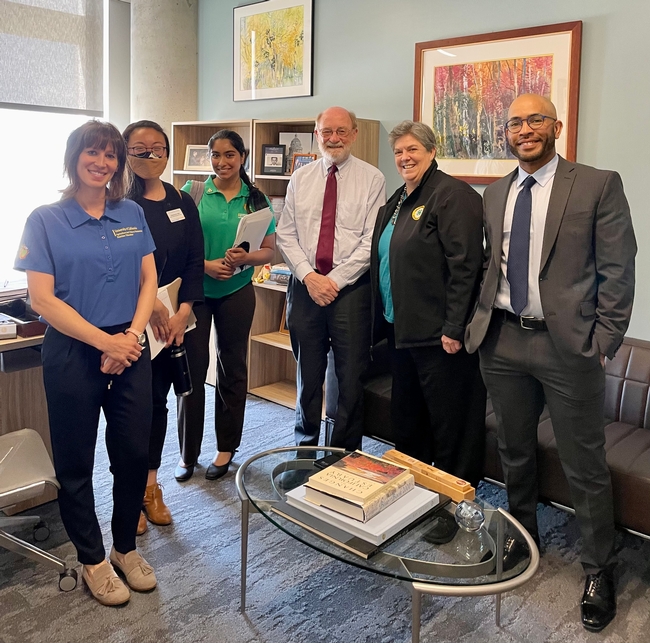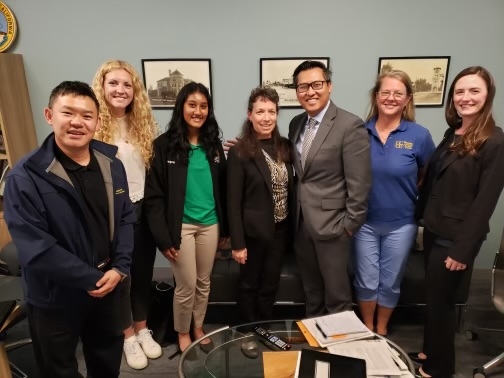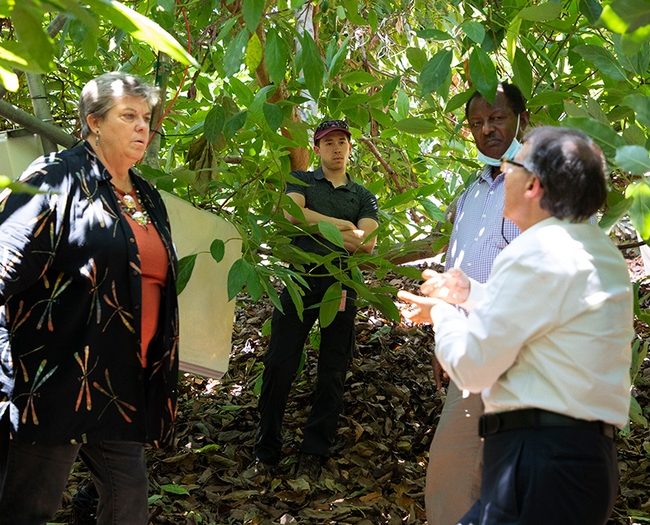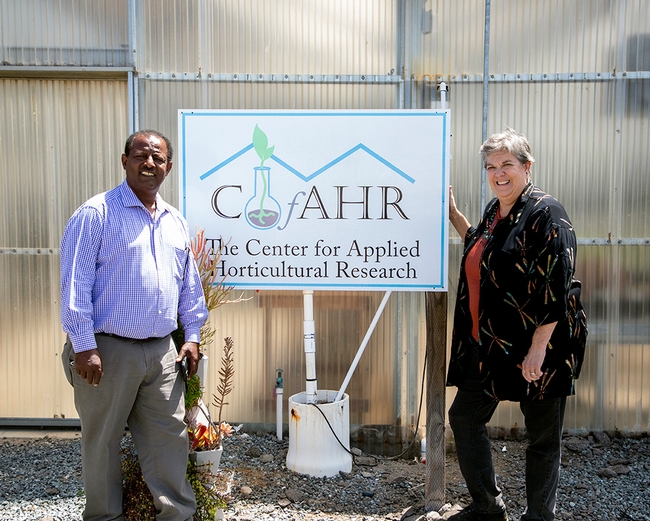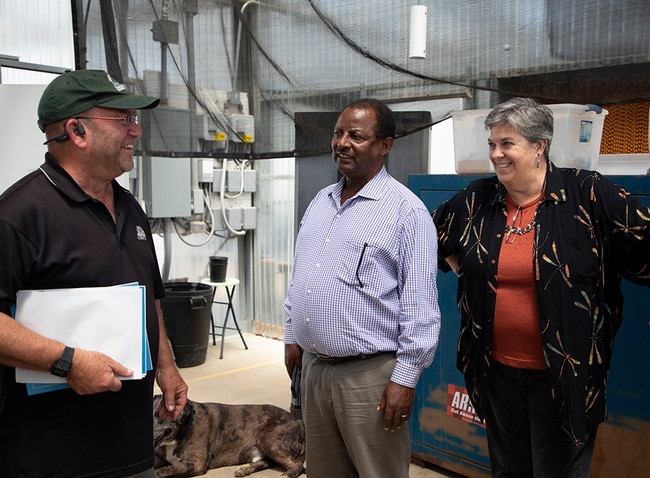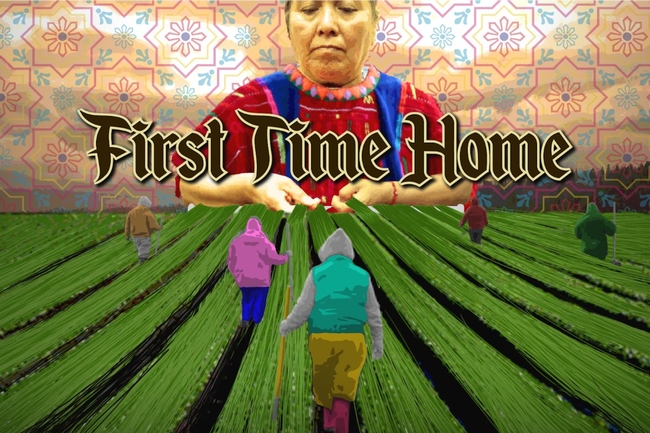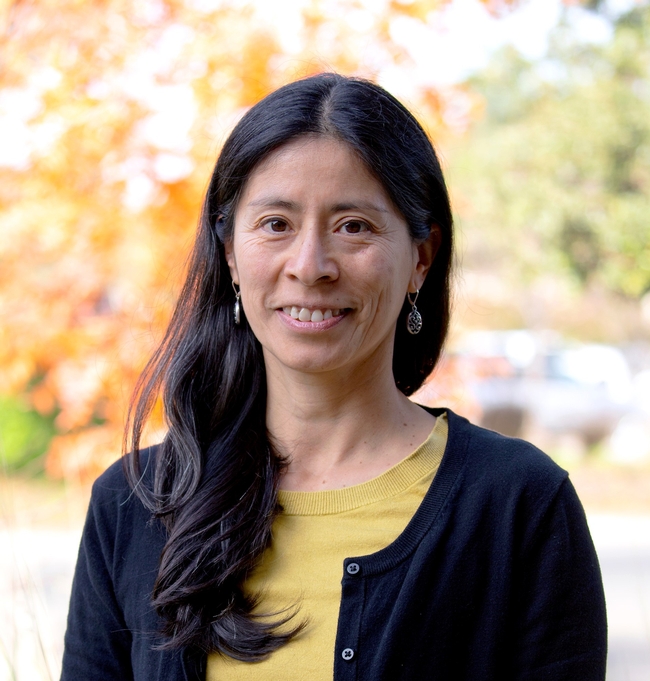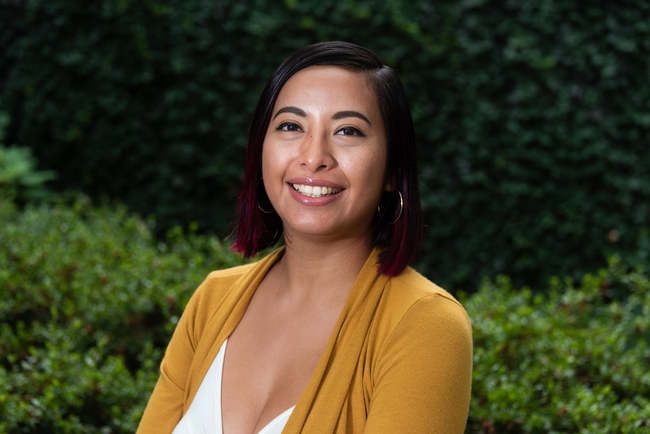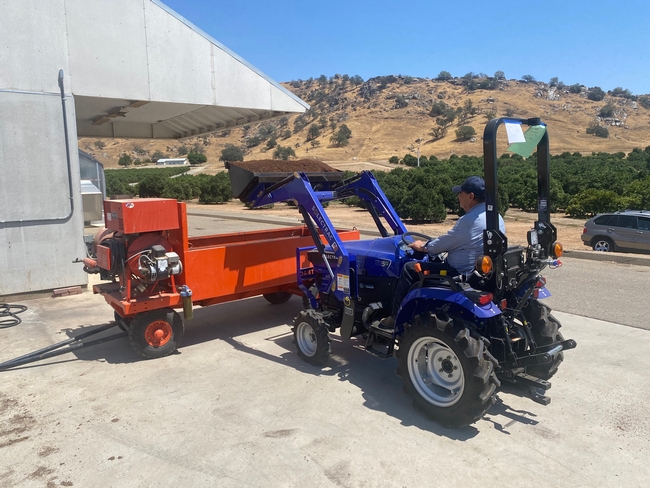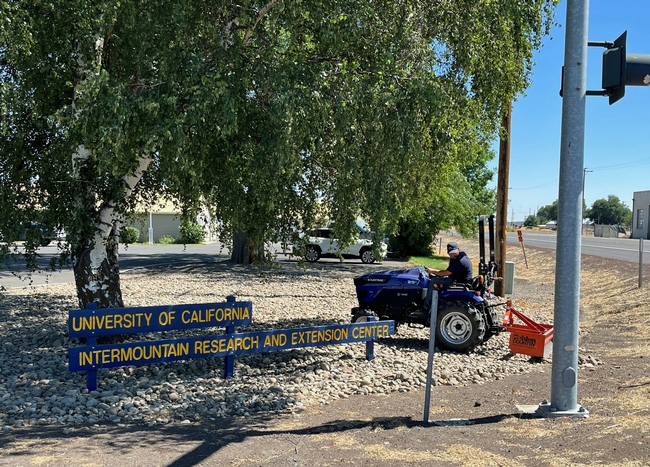Posts Tagged: Anne Megaro
UC ANR thanks legislators for supporting UC ANR research and extension
Representatives of UCANR visited the legislative building in Sacramento for UCANR Advocacy Day on April 18 and engaged with members of the Legislature and staff to advocate for UC's budget priorities. Attendees included Glenda Humiston, vice president; Deanne Meyer, interim associate vice president; Anne Megaro, director of government and community relations;Sheron Violini, associate director of government and community relations; and Lara Schröder, graduate student assistant. They were joined by UC Cooperative Extension advisors, statewide program representatives and two 4-H youth State Ambassadors .
The UC ANR team visited 16 legislative offices and were honored to meet directly with Assemblymember Vince Fong and Senator John Laird.
UC ANR representatives provided insights into how UC ANR delivers applicable research tools and knowledge and adds value to local communities. Zheng Wang, UCCE vegetable crops advisor, shared how farmers in Stanislaus County have been able to increase their profits by growing grafted watermelons using the same amount of water for a greater yield, while Susie Kocher, forestry and natural resources advisor, talked about her workshops for small forest landowners to prevent catastrophic wildfires and to help recover after a wildfire. 4-H State Ambassadors Megna and Sruthi told their stories of how the youth development leadership program has improved their personal skills and also how they engage with low-income schools and introduce STEM and agriculture to elementary school students.
Amira Resnick, statewide director of community nutrition and health, Stephanie Mar, associate organic waste management advisor, and Hanif Houston, associate director of communications and marketing for The VINE, also shared success stories and how UC ANR has made significant progress within the past year.
Resnick and Mar explained how UC ANR's nutrition and organic waste management programs teach Californians about nutrient dense foods, food preservation and composting. Houston highlighted how robots and drones play an important role in agriculture production. The UC ANR representatives also invited the legislators and staff to visit UC ANR's Elkus Ranch Environmental Education Center and UC ANR Research and Extension Centers in members' districts.
This valuable work is achieved through supportive state funding. These visits underlined the importance of the 5% base budget increase as currently proposed by Gov. Gavin Newsom for the upcoming fiscal year and asked staffers and members to support the proposal.
A special highlight of the day was a short tour of the State Capitol. Thanks to Sheron Violini, the group viewed the governors' portraits, peeked into the Senate Floor and learned the history of the Reagan statue.
Several follow-up opportunities stemmed from these meetings, and Assemblymember Cottie Petrie-Norris is already planning to visit South Coast REC, and Assemblymember Vince Fong doesn't want to wait for the December citrus tasting to visit Lindcove REC. The government and community relations team is looking forward to extending future invitations for members to visit UC facilities, and especially to a forest management and prescribed burning tour at the Blodgett Forest Research Station.
The UC ANR representatives also met with legislative staff for Senators Josh Becker, Nancy Skinner, Dave Min, Marie Alvarado-Gil, Anna Caballero, Melissa Hurtado and Steve Padilla, and Assemblymembers Rebecca Bauer-Kahan, Reginald Jones-Sawyer, Carlos Villapudua, Robert Rivas, Luz Rivas and Juan Alanis.
Humiston visits UCCE in San Diego County
Vice President Glenda Humiston visited San Diego County on Aug. 3. The day started with UC Cooperative Extension San Diego advisors and staff introducing themselves and County Director Oli Bachie briefing Humiston on San Diego County agriculture, current programs and new UCCE positions to be filled soon. Bachie also highlighted some of the constraints UCCE San Diego faces implementing research and extension programs, and voiced the need for expanded facilities.
Following Bachie's briefing, Humiston interacted with the advisors and staff. She spoke about current funding opportunities for UC ANR, employee salary equities, and the need to communicate with local elected officials and stakeholders about the role of UCCE and the value it provides to the community. Over a light lunch, Humiston entertained questions from advisors and staff – ranging from her vision for the future of UC ANR to the path she took to become VP. At the conclusion of lunch, Bachie and other UCCE advisors and staff led Humiston on a field tour so she could meet UCCE collaborators and see firsthand some of the agricultural production in San Diego County.
The tour started with a visit to an avocado grove in Escondido where Ali Montazar, a cross-county UCCE advisor for irrigation and water management, has an active research project. Montazar's project addresses water use and efficiency in avocado, one of the primary crops grown in San Diego County and much of Southern California. Although the steep and hilly terrain made accessing the site difficult, this stop provided an excellent opportunity to showcase the research and extension activities of the county and cross-county advisors.
At the next stop, Humiston had the chance to visit Ken Altman, the largest horticultural producer in the country, at the Center for Applied Horticultural Research in Vista. During the visit, Altman briefed Humiston about his nursery and the extent of his business. Altman grows a large variety of nursery crops for indoor and landscape purposes, and employs over 6,000 people all over the country. Altman also spoke about the facilities at CfAHR and his willingness to offer research and laboratory space for use by UCCE San Diego. A long-time collaborator with UCCE, Altman expressed his commitment to support UC ANR's research needs and described the benefits he sees from UCCE partnering with local producers. While the laboratory at CfAHR is currently unused, Altman reiterated his desire to share the space with any interested UCCE San Diego advisors. Humiston and Bachie thanked Altman for his generous offer of support and facilities.
At the San Diego County Farm Bureau headquarters in Escondido, Humiston met with its president, Mary Matava, and discussed the importance of Farm Bureau as both collaborator and clientele, and the importance of keeping good relationships with the local UCCE office. Both reiterated the mutual benefits that come from a strong working relationship between UCCE and Farm Bureau. They also discussed UCCE San Diego's office lease, and the need for facilities that satisfy the requirements of the UCCE office, such as storage, laboratory, greenhouse and commercial standard kitchen space.
“Regardless of whether UCCE San Diego continues to lease the Farm Bureau offices, UCCE San Diego will show its presence and visibility at the Farm Bureau building at least on a rotational basis and will continue to collaborate with the important partner that is Farm Bureau,” Bachie said.
The final stop was at Escondido City Hall for a brief tour guided by Jennifer Schoeneck, deputy director of economic development for the City of Escondido. Also in attendance were leaders from nearby community colleges. Schoeneck provided detailed information on a currently unused warehouse facility that the city intends to remodel and retrofit so it can be used as an agricultural hub. Various agricultural technology companies, universities and colleges would use the space together to conduct research, teach and support agriculture within San Diego County. Humiston expressed her appreciation for the potential of the center and said that UC ANR will look at opportunities to collaborate with the city to develop the facility into a broad-spectrum agricultural hub.
Throughout the field tour Humiston was accompanied by Eric Middleton, UCCE integrated pest management advisor; Chandra Richards, agricultural land acquisitions academic coordinator; Robert Padilla, digital media specialist; Jan Gonzales, project coordinator and community education supervisor; Shirley Salado, EFNEP community education supervisor; Lea Corkidi, staff research associate; and Sue Lake, administrative officer.
By the end of the visit, Humiston and the group had gained a deeper understanding of UCCE San Diego programs, projects, challenges and opportunities.
Save the date for UC ANR statewide conference on April 24–27
The 2023 UC ANR statewide conference will be held on April 24–27 at the Fresno DoubleTree and Fresno Convention Center in Fresno. Please mark your calendars and plan to join your UC ANR colleagues.
For the first time since 2018, ANR academics and staff from across the state will gather to share best practices on how to elevate and amplify their research, extension and education efforts.
The conference is also the official kickoff to UC ANR's 2025-2040 visioning process. We will begin identifying the challenges facing California and set a course detailing how we can more effectively address them over 15 years.
For more information, please visit the conference website at https://ucanr.edu/sites/statewideconference2023.
If you would like to propose a presentation, fill out the request form at https://surveys.ucanr.edu/survey.cfm?surveynumber=38880. All suggestions will be evaluated by the Learning & Poster Session Committee.
For more information, visit https://ucanr.edu/sites/statewideconference2023.
UC ANR celebrates Hispanic Heritage Month Sept. 15-Oct. 15
Hispanic Heritage Month is Sept. 15 through Oct.15 and Ricardo Vela, manager of UC ANR News & Information Outreach in Spanish, has planned educational activities for colleagues and friends to attend throughout the month.
Each year, UC ANR celebrates the culture and contributions of people whose ancestors came from Spain, Mexico, the Caribbean, and Central and South America. Latinos comprise 40% of California's population and a growing portion of UC ANR's clientele. Our Latinx colleagues help to customize UC ANR's outreach for the Latino community, from immigrants to native-born citizens.
To start the celebration, the newly formed Latinx & Friends Affinity Group will meet for the first time on Sept. 21. To register, visit https://surveys.ucanr.edu/survey.cfm?surveynumber=38886.
“UC ANR is giving us this fantastic opportunity to share our stories of struggle, success and dreams within a safe space,” Vela said. “This space is open to all of us who are Latinx/Hispanic or of Latinx/Hispanic descent, allies and friends to discuss the many cultural identities.”
The September events will be held via Zoom for UC ANR colleagues:
Wednesday, Sept. 21, 12-1:30 p.m. First meeting of Latinx & Friends Affinity Group (45 minutes) and screening of the short film “First Time Home” about four cousins who travel from their Triqui immigrant community in California to their ancestral village in Mexico for the first time. (45 minutes)
Wednesday, Sept. 28, 12-1 p.m. Jose Pablo Ortiz-Partida will discuss the results of an environmental justice study he conducted in the San Joaquin Valley. Ortiz-Partida is a senior water and climate scientist for the Climate & Energy program at the Union of Concerned Scientists.
Register for the Hispanic Heritage Month employee events at https://surveys.ucanr.edu/survey.cfm?surveynumber=39023.
Events scheduled for October will be conducted in Spanish and open to the public on Facebook Live:
Wednesday, Oct. 5, 1-2 p.m. – Susana Matias, UC Cooperative Extension specialist in the Department of Nutritional Sciences and Toxicology at Berkeley, will discuss healthy living, obesity and breastfeeding.
Wednesday, Oct. 12, 1-2 p.m. – Magda Argueta, UC ANR's Global Food Initiative Fellow and UC Riverside doctoral candidate, will discuss ancient Mayan pollinating practices with stingless bees.
Thursday, Oct. 13, 1-2 p.m. – Samuel Sandoval Solis, UC Davis assistant professor and Cooperative Extension specialist in water resources, will discuss climate change effects. What can we do? What is UC ANR already doing?
Electric tractors reduce carbon emissions at research and extension centers
Zero-emission tractors perform many tasks of diesel tractors, without noise or exhaust
The University of California, a national leader in sustainability, has pledged to become carbon neutral by 2025. To reduce its reliance on fossil fuels, UC Agriculture and Natural Resources has replaced several of its diesel-powered tractors with electric tractors at its research and extension centers.
Seven of the nine UC research and extension centers – Intermountain located in Siskiyou County, Hopland in Mendocino County, Kearney and West Side in Fresno County, Lindcove in Tulare County, Desert in Imperial County and Hansen in Ventura County – started using the Solectrac e25 in July. The researchers plan to share what they learn from using the electric tractors.
“Charging is easy, we are using a standard 110V connection, no charging station needed,” said John Bailey, director of the University of California Hopland Research and Extension Center. “For faster charging, you can use a 220V connection – again, no charging station needed, just a regular receptacle – but we haven't gone there yet.”
The electric tractor runs for about five hours, depending on the type of use and the speed, on a charge.
“We will use the electric tractor to mix the soil for planting trees in the greenhouse,” said Ashraf El-kereamy, director of UC Lindcove Research and Extension Center in Exeter, which focuses on citrus research. “Also, for pulling the trailer with the fruit bins during harvest, it will be good as it does not emit any gases.”
The electric tractor is being used to move materials in the loader at UC Hopland REC. “It has worked well for this, functioning similarly to a standard diesel tractor,” said Bailey.
“We have also used it to clean our sheep barn, scraping the pens to get ready for lambing season,” Bailey said. “This involves pushing or dragging straw bedding and manure. The tractor functions well in tight spaces due to its compact size.”
Bailey learned one downside is that the front end is a little too light, making it difficult to generate enough downward pressure with the loader to effectively scrape the floor without reducing the front wheel traction.
“We are planning to add some weight to the front, a standard practice with tractors to increase traction. The tractor has the mounting to enable this so it should not be a big deal,” Bailey said. “Our operators really appreciate the lack of noise and exhaust, especially when working in the barn or in tight spaces.”
The small electric tractor is also being used in tight places at the UC Intermountain Research and Extension Center in Tulelake.
“The tractor that we obtained from the company is too small for the majority of our farm needs,” said Rob Wilson, Intermountain REC director. “We purchased a small box scraper and rototiller for the tractor and we are using it around our facility grounds. We also use it out in the field in tight spaces that are too small for our larger tractors to operate.”
“The tractor is quiet, powerful for its size and operates very similar to the diesel-powered tractors with regard to the controls, hydraulics and three-point assembly. The tractor also has a lot of torque and speed.”
Annemiek Schilder, director of UC Hansen Agricultural REC, added, “I think another advantage is that the tractors can go very slowly, which is helpful for some uses such as harvesting.”
Kearney, or KARE, will be using its electric tractor to mow and rototill in smaller, narrow blocks and will use the front loader to move and apply mulch and soil mixtures.
“We will use it around buildings because it's quiet and doesn't emit any gas,” said Vincent Silva, Kearney's superintendent of agriculture. “The main issue I have with the electric tractor is with it being so quiet, it may not allow us to hear any problems."
The researchers will continue to evaluate the electric tractors throughout the year.
“Our main usage will come in the spring, mowing around our headquarters and on roadsides,” Bailey said. “We are purchasing a 4-foot flail mower that can mount to the rear PTO, but won't really put it into use until April.” The power take-off, or PTO, is the shaft that transfers power from the tractor to the attachment.
Other benefits of electric tractors include no engine oil to change and no diesel fuel.
“If the farmer already has solar, they will see close to zero fuel charges,” Bailey added. “Even without solar, their fuel costs should be reduced depending on local electrical cost. Also, the engine only has one moving part compared to dozens in a diesel tractor so maintenance costs should be reduced significantly, something that is proving true in electric cars.”
The Solectrac e25 tractors each cost $27,999 and the optional loader was about $4,000.
The California Air Resources Board is offering incentives to buy zero-emission equipment through its Funding Agricultural Replacement Measures for Emission Reductions Program. FARMER provides funding through local air districts for agricultural harvesting equipment, heavy-duty trucks, agricultural pump engines, tractors and other equipment used in agricultural operations.


